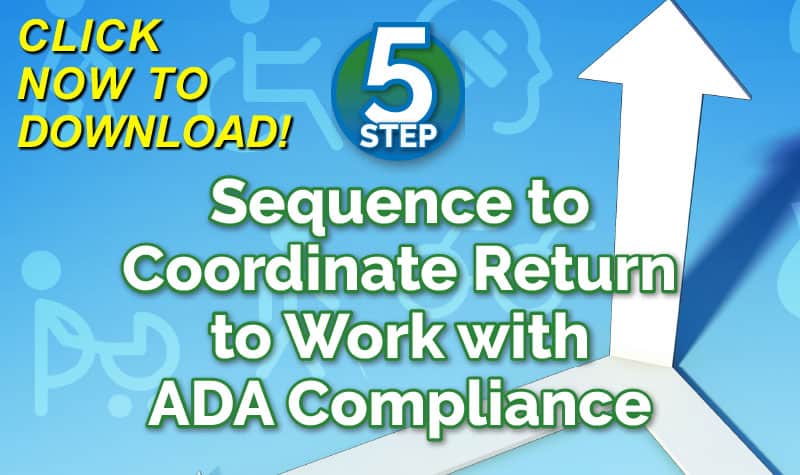If not properly coordinated, a company's employee benefit and compensation programs may inadvertently serve to extend workers' compensation absences. That happens because there is no incentive to return to work when someone is able to make as much OR MORE when NOT WORKING. When designing your integrated disability managment programs, keep this in mind.
If your projected workers' compensation savings have yet to materialize even though your company has implemented a corporate return-to-work program, multiple employees could be following this pattern: an injured employee receives long-term disability (LTD) in addition to workers' compensation benefits and the total exceeds his pre-injury earnings.
If the employee also had credit disability insurance, his house and car payments would be eliminated as long as he was unable to work. Child care and commuting expenses would also be reduced while your employee stays home. As such, he refuses your offer of a transitional duty job at full salary.
It may be time to examine the impact of collateral resources, often resulting in employees out on workers' compensation receiving more income and benefits than they would have if they were working.
Some disincentives for returning to work:
1. Salary and Wage Continuation: Some companies pay 100% of salary in lieu of having an employee collect workers' compensation for injuries of short duration.
2. Occupational Injury Pay Supplements: Many firms pay supplemental benefits to make up the difference between workers' compensation benefits and regular earnings.
3. Open-Ended Job Return: Instead of holding jobs open indefinitely, employers should hold jobs open for a specific time period.
4. Vacation and Sick Time: Companies frequently allow vacation and sick time to accrue for employees on workers' compensation. Some even allow employees to "borrow" more sick time.
5. Short-Term Disability: In some companies, disabled employees receive STD benefits in lieu of salary after six weeks. But the standard definition for disability may differ from workers' comp, allowing an employee to collect both.
6. Perk Continuation: Employers often maintain ancillary benefits and privileges such as car allowances, club and professional dues, and periodical subscriptions for employees on disability.
7. Loan Protection Policies: Individual insurance policies are available to pay mortgages and consumer loans such as car loans and credit card debts in the case of a disability.
8. Unemployment Compensation: In a few states, an employee receiving workers' comp also can qualify for state unemployment benefits.
9. Pension and Retirement Plans: If these plans do not allow for offset of workers' comp benefits, an employee can receive workers' compensation benefits and a full pension. (workersxzcompxzkit)
10. Product Liability Actions: An employee can file an action against the manufacturer of a product that injured him to collect damages. The employer should seek reimbursement for workers' comp payment from any such settlement.
FREE "FRAUD PREVENTION" AUDIO PODCAST click here: http://www.workerscompkit.com/gallagher/mp3 By: Anthony Van Gorp, private investigator with 25 years experience.











